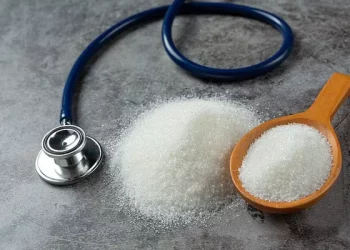Diabetics often turn to sugar-free foods in hopes of enjoying sweet flavors without spiking blood sugar. However, the term “sugar-free” is misleadingly complex. This article dissects the science behind these products, analyzing their impact on blood glucose, insulin response, and overall health to clarify their role in diabetes management.
Understanding the Concept of Sugar-Free
The term “sugar-free” is regulated by food authorities, typically meaning that a serving of the product contains less than 0.5 grams of sugars. However, this does not necessarily mean that the food is carbohydrate-free or calorie-free. Many sugar-free products substitute regular sugar with alternative sweeteners, sugar alcohols, or high-fiber ingredients to maintain sweetness and texture.
Alternative sweeteners, such as artificial sweeteners (sucralose, aspartame, saccharin) and natural sweeteners (stevia, monk fruit extract), provide sweetness with little to no impact on blood sugar. Sugar alcohols, like xylitol, sorbitol, and mannitol, have a lower caloric value and a milder effect on blood glucose compared to regular sugar. High-fiber ingredients can also contribute to sweetness while slowing down carbohydrate digestion and absorption. Understanding these substitutes is crucial for diabetics to make informed decisions about sugar-free food consumption.
Impact on Blood Sugar Levels
One of the primary concerns for diabetics is how sugar-free foods affect blood glucose levels. While alternative sweeteners generally have a negligible impact on blood sugar, sugar alcohols can still cause a small increase in glucose, especially when consumed in large quantities. For example, sorbitol and mannitol have a glycemic index (GI) of around 3 and 0, respectively, but their absorption in the digestive tract is incomplete, and excessive intake can lead to gastrointestinal discomfort and a modest rise in blood sugar.
High-fiber sugar-free products can be beneficial for blood sugar control. The fiber content in these foods delays the digestion and absorption of carbohydrates, preventing rapid spikes in blood glucose. However, it’s important to note that some sugar-free products may still contain significant amounts of carbohydrates from other sources, such as flour or starches, which can raise blood sugar levels if not accounted for in a diabetic meal plan.
Insulin Response and Metabolic Effects
The consumption of sugar-free foods can also influence insulin response and overall metabolism. Although alternative sweeteners do not directly stimulate insulin secretion, some studies suggest that they may affect the body’s ability to regulate blood sugar over time. For instance, artificial sweeteners may alter the gut microbiota, potentially impacting glucose metabolism and insulin sensitivity.
Sugar alcohols, on the other hand, can cause a small insulin response, even though they have a lower glycemic impact compared to regular sugar. This is because the
Nutritional Profile
The nutritional profile of sugar-free foods varies widely depending on the ingredients used. While some sugar-free products are rich in nutrients, such as fiber, protein, and healthy fats, others may be high in calories, saturated fats, or sodium. It’s important for diabetics to carefully read food labels and consider the overall nutritional content of sugar-free foods.
For example, sugar-free baked goods may contain high amounts of flour and fat to compensate for the lack of sugar, resulting in a product that is high in calories and low in nutritional value. On the other hand, sugar-free yogurt fortified with protein and probiotics can be a nutritious addition to a diabetic diet. By choosing sugar-free foods with a balanced nutritional profile, diabetics can ensure that they are meeting their dietary needs while managing their blood sugar levels.
Potential Risks and Side Effects
While sugar-free foods offer several benefits for diabetics, they are not without risks and side effects. As mentioned earlier, excessive consumption of sugar alcohols can lead to gastrointestinal problems, such as bloating, gas, and diarrhea. Some artificial sweeteners have also been associated with potential health risks, although the evidence is inconclusive.
In addition, the perception of sugar-free foods as “healthier” may lead to overconsumption, as people assume that they can eat more without consequences. This can result in weight gain and other health issues, especially if the sugar-free products are high in calories or unhealthy ingredients. Diabetics should be aware of these potential risks and consume sugar-free foods in moderation as part of a balanced diet.
Making Informed Choices
When it comes to choosing sugar-free foods, diabetics should follow these guidelines:
Read labels carefully: Pay attention to the ingredient list and nutritional facts panel to understand the composition of the product. Look for products that are low in added sugars, calories, and saturated fats, and high in fiber, protein, and other nutrients.
Choose natural sweeteners: Opt for sugar-free products that use natural sweeteners, such as stevia or monk fruit extract, rather than artificial sweeteners. These sweeteners are generally considered safer and have a lower impact on blood sugar levels.
Be cautious with sugar alcohols: While sugar alcohols can be a suitable alternative to sugar, they should be consumed in moderation to avoid gastrointestinal discomfort. If you experience any adverse effects, reduce your intake or choose products without sugar alcohols.
Consider the overall diet: Sugar-free foods should be part of a balanced diet that includes plenty of fruits, vegetables, whole grains, lean proteins, and healthy fats. Don’t rely solely on sugar-free products to manage your blood sugar levels.
Consult a healthcare professional: If you have any questions or concerns about sugar-free foods, consult your healthcare provider or a registered dietitian. They can provide personalized advice and guidance based on your individual needs and health status.
body still recognizes the presence of carbohydrates, albeit in a modified form. Understanding these metabolic effects is essential for diabetics, as they can impact long-term blood sugar management and overall health.
Conclusion
Sugar-free foods can be beneficial for diabetics when selected mindfully. While they offer a way to satisfy sweet cravings without immediate blood sugar surges, understanding their ingredients, nutritional value, and metabolic effects is crucial. By reading labels carefully, choosing natural sweeteners, consuming in moderation, and integrating them into a balanced diet, diabetics can harness the benefits of sugar-free options for better health.
























